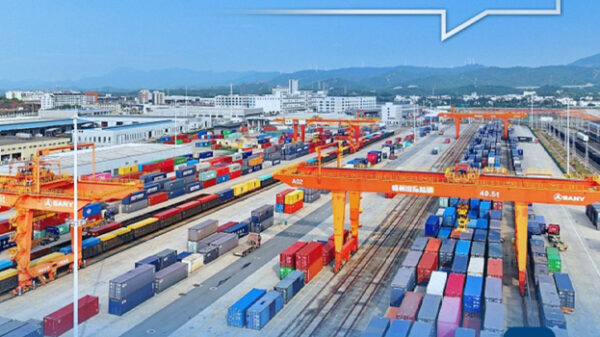NAIROBI, Kenya, Sep 12 – Kenyan authorities visited the scene of Monday’s pipeline fire tragedy at Sinai slum in Nairobi and decried the “national disaster” that left 120 people dead, with fears the toll would rise.
At least 112 survivors were admitted to the Kenyatta National Hospital in Nairobi with varied degree of burns described by doctors and rescuers as “extremely serious.” Four others were admitted to the Mater Hospital.
“This is a national disaster. There is no other way of describing it,” Vice President Kalonzo Musyoka said at the scene. “For now we need to deal with this situation. We need to do whatever it takes to help. It is not time to blame one another, it is a tragedy.”
“People here are traumatised and they need urgent counselling, those arrangements are underway and it needs to be done,” he added.
Prime Minister Raila Odinga who was accompanied by Energy Minister Kiraitu Murungi to the slum in Lunga Lunga said: “It is a terrible, terrible situation. It is a sad scene and indeed very sad to lose our people in a disaster such as this.”
“We are telling people who are living on top of the pipeline to move out because anything can happen; you know it has pressure and anything can happen to the pipeline when it has fuel. It is just terrible,” he said, intermittently wiping away tears as he addressed journalists and a crowd that gathered where the more than 100 badly burnt bodies were strewn.
The Head of Operations at Police Headquarters Julius Ndegwa told Capital News they had not conclusively established the exact number of people who died in the tragedy that occurred on Monday morning.
“We don’t know how many people have died… we will be able to give a comprehensive statement once all the data is compiled,” he said.
Nairobi Town Clerk Philip Kisia however told journalists that city hall staff, including those involved in putting out the inferno had managed to count up to 120 bodies.
“We have lost 120 people in this tragedy but from the look of things, the number could rise further because as you can see there are even bodies in the river of the people who were possibly trying to escape the fire,” Mr Kisia said.
By 6pm on Monday, police had not managed to remove the bodies from the scene, citing logistical problems.
There were conflicting reports of the possible cause of the fire that started at about 10am.
“There had been a leak in the fuel pipeline earlier, and people were going to collect the fuel that was coming out. That is when it happened,” said Joseph Mwego, a resident there.
“There was a loud bang, a big explosion, and smoke and fire burst up high.”
Many residents were caught up in the blaze.
When the Capital News crew arrived at the scene, fire fighters from the Nairobi City Council and other emergency response organisations were still battling the inferno which was quickly spreading to shanties in the slum.
Most people were either burnt in their houses or on foot paths as they possibly tried to flee the inferno.
Some women were burnt clutching their babies while the lives of others ended tragically as they tried to cross the Nairobi River which cuts through the densely populated slum.
“I have never seen this in my life. I have seen women and children burnt like firewood. The very worst was a woman burned with her baby on her back,” a local resident Francis Muendo said.
Other residents interviewed at the scene said it was not the first time they were siphoning fuel from the pipeline “and authorities know that.”
“It happens whenever the Kenya Pipeline Company is pumping fuel and there is a way people are able to know and we usually go to get fuel from there,” another resident Francis Munge said.
“There are people who know how to open it and I don’t know what happened this time for it to have burst, maybe it was with a lot of pressure,” he added.
Another resident Kenneth Makau said: “It is usually a long queue here people getting fuel with jerrycans from that pipeline. It is an open secret because even the pipeline people know it very well. It has been happening.”
Energy Minister Kiraitu Murungi said; “It is the worst disaster that has happened to the energy sector in our country,” but blamed the mishap on residents who have been squatting on the pipeline.
“It is quite unfortunate that some people have been squatting in an area reserved for the pipeline. We have been trying to remove them but unfortunately we have never succeeded,” the minister said.
“But we are sorry for what has happened and full investigations will be carried out. We will discuss with the Kenya Pipeline so that maximum support is given to the relatives of those affected,” he added when he visited the scene and later to hospitals.
Fuel leaks and oil tanker accidents in Africa often draw huge crowds scrambling to scoop fuel, resulting in many deaths due to accidental fires.
In 2009, 122 people were killed after a fire erupted while they were drawing fuel from an overturned tanker in Sachangwan on the Nakuru-Eldoret highway.















































